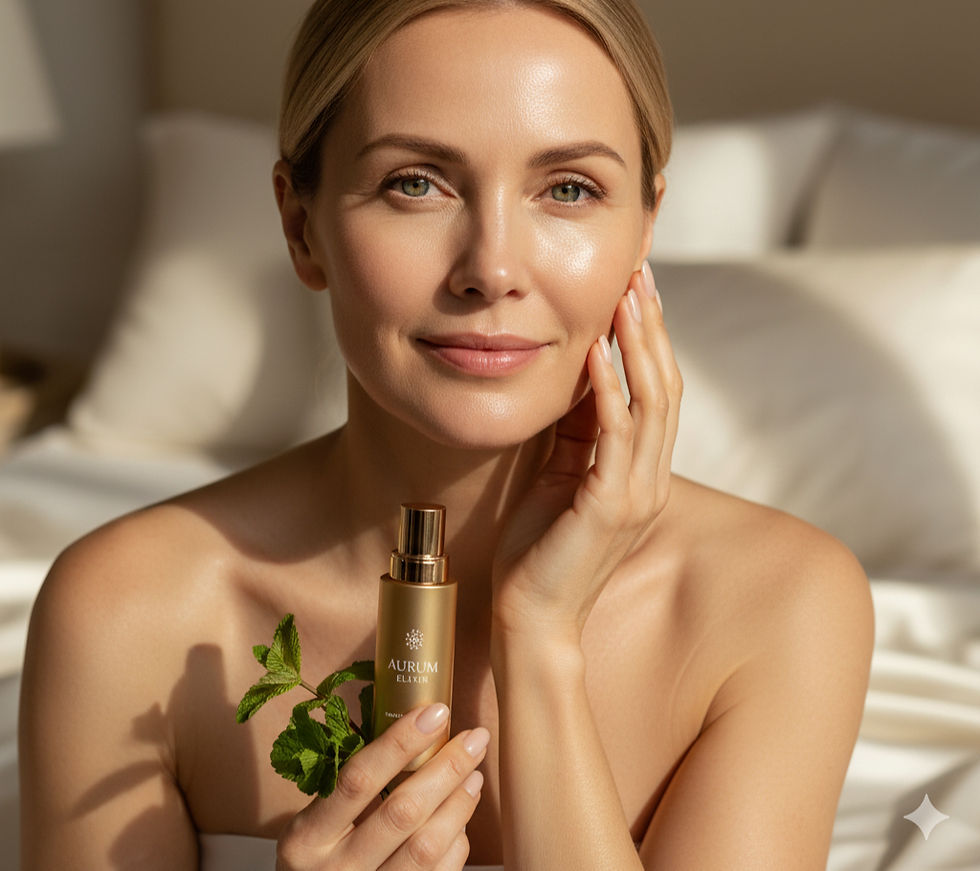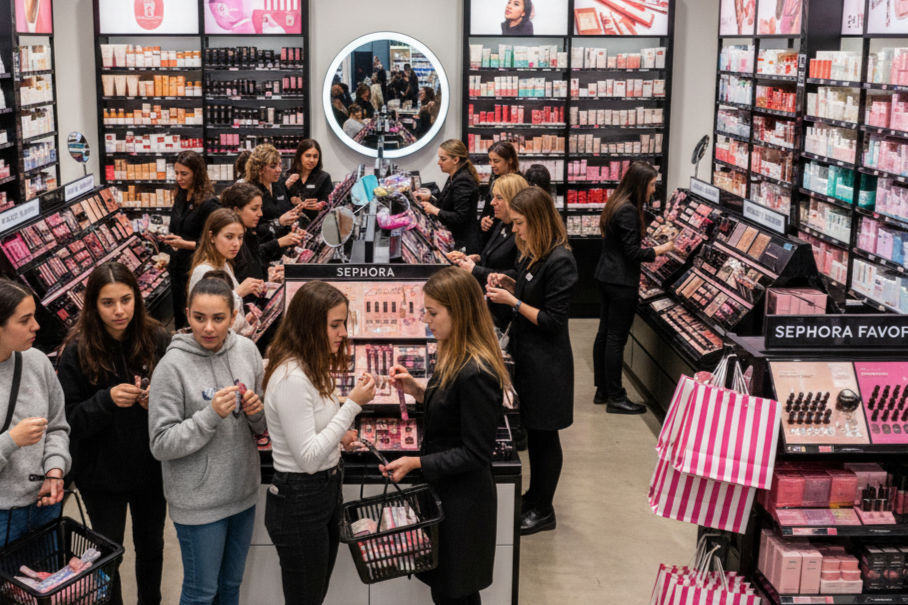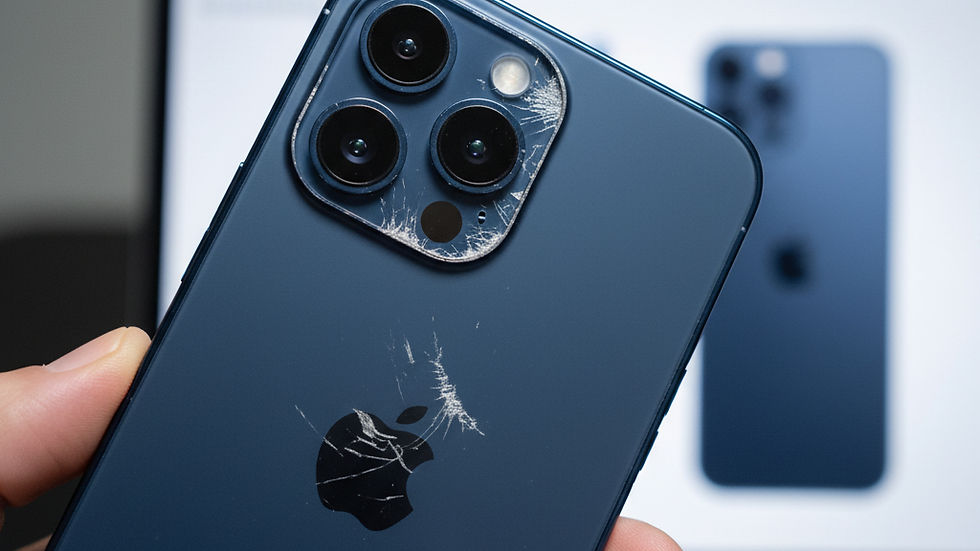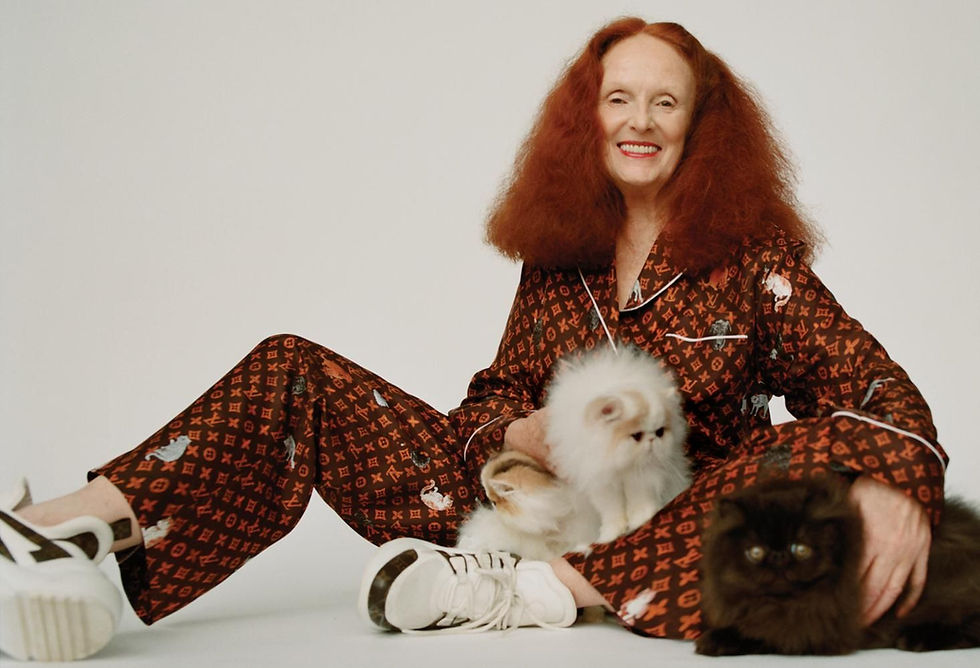The September 22nd Briefing: Decoding the Zeitgeist Across Design, Fashion, and Digital Culture
- Breanna Ricci Charles-HIll
- 4 days ago
- 8 min read
I. The Cultural Forefront: Macro-Trends Shaping the Creative Landscape

The creative landscape of late 2025 is defined by a series of powerful, often contradictory, cultural currents. These undercurrents are not confined to a single industry but flow across fashion, beauty, technology, and design, shaping aesthetics, driving consumer behavior, and creating new challenges for brands and creators. To understand the specific events and trends of the day, one must first grasp the three fundamental tensions that form the backdrop for every major story: the authenticity paradox, the maturation of AI into a creative co-pilot, and the growing friction between aesthetic ambition and physical reality, which reveals a fragility of form in our most desired objects.
The first and most pervasive tension is the Authenticity Paradox. This is a cultural obsession with "realness" that, paradoxically, often requires a highly curated, resource-intensive, and performative display of naturalness. This conflict is vividly illustrated by two opposing forces in the beauty sector. On one side, a movement championed by figures like Pamela Anderson advocates for a makeup-free existence, a choice that ostensibly rejects artificial beauty standards. Yet, this "natural" look is predicated on achieving a state of "radiant skin" that necessitates significant investment in skincare, treatments, and a disciplined lifestyle, making it a new, more subtle form of status signaling. On the other side, the hyper-consumerist skincare craze among Generation Alpha—the so-called "Sephora Kids"—reveals a different performance of self, one driven by social media trends and a desire to emulate influencer routines with expensive, often age-inappropriate products. Both movements chase a form of authenticity, but their methods and motivations expose a deep societal anxiety about appearance and self-worth.

The second macro-trend is the normalization of the AI Co-Pilot. Artificial Intelligence has rapidly evolved from a novel curiosity into an indispensable, and at times controversial, partner in the creative process. The conversation has shifted from if AI will be used to how it is fundamentally reshaping workflows, aesthetics, and the very definition of creativity. Across graphic design, web development, and even fashion marketing, AI is being integrated to accelerate ideation, personalize user experiences, and generate novel visual languages. This integration is not without its own friction; as AI tools become more powerful and autonomous, the design community is grappling with profound questions about ethics, originality, and the psychological impact of collaborating with non-human intelligence.

Finally, the third dominant theme is the Fragility of Form. A palpable tension has emerged between the aesthetic ambitions of product designers and the physical limitations of their chosen materials. This is most starkly seen in today's major technology controversies. Apple's new iPhone 17 Pro is at the center of a "Scratch-gate" scandal, where a design choice prioritizing a sharp, clean aesthetic has resulted in a product that is surprisingly susceptible to cosmetic damage, undermining the brand's reputation for flawless craftsmanship. Similarly, Tesla has been compelled to redesign its signature flush door handles after numerous safety incidents and regulatory pressure highlighted how its futuristic design failed in critical, real-world scenarios. Acting as a cultural coda to this theme is the recent retirement of the Louvre's beloved Nintendo 3DS visitor guides. The discontinuation of this unique, tangible piece of hardware in favor of an inevitable, generic smartphone app marks a broader cultural shift away from specialized physical objects toward ubiquitous, and often less magical, software solutions
These three tensions—authenticity, AI integration, and physical fragility—are not isolated phenomena. They are interconnected expressions of a deeper, unifying force: a pervasive crisis of trust. The "no-makeup" trend and the Gen Alpha skincare boom, for instance, both originate from a place of distrust. The former reflects a distrust of traditional, "fake" beauty standards, while the latter is fueled by a hyper-anxious, influencer-driven distrust of one's own natural aging process, even in childhood. The rapid adoption of AI in design is immediately followed by a professional discourse centered on the "Psychology of Trust in AI," indicating that the primary barrier to its full potential is not technical, but psychological and ethical. The public backlash against Apple and Tesla is a direct consequence of a breach of consumer trust. Customers invest in these brands with the expectation of receiving products that are not only beautiful but also durable and safe. "Scratch-gate" and the door handle failures are perceived as betrayals of this fundamental brand promise. This undercurrent of eroding trust—in institutions, in brands, in digital representations of reality, and even in our own natural appearance—provides the essential context for understanding the complex creative landscape of September 2025.

II. The New Look: Deconstructing Today's Fashion & Beauty Narratives
The Authenticity Paradox: The "No-Makeup" Movement vs. The Rise of
Gen Alpha Beauty
The contemporary beauty and fashion landscape is a battleground of competing ideologies, most visibly captured in the stark contrast between the "no-makeup" movement and the burgeoning Gen Alpha beauty market. These two phenomena, while seemingly polar opposites, are two sides of the same coin, each reflecting a deep-seated cultural negotiation with the concepts of authenticity, self-worth, and status in a digitally mediated world.
The Performance of "No-Makeup"
The "no-makeup" trend has gained significant cultural momentum, championed by high-profile figures like Pamela Anderson, who at 58, has been attending major fashion shows and film premieres with a "blissfully bare face". This move is framed as an act of liberation and freedom, a rejection of the pressure to chase youth and relevancy with a "full face" of cosmetics. However, a closer analysis reveals that this is not a rejection of beauty standards, but rather a shift towards a new, arguably more demanding, paradigm.
The aesthetic goal is not simply the absence of makeup, but the presence of "radiant," "glowing" skin. Achieving this look requires a rigorous and often expensive regimen. Beauty experts and proponents of the lifestyle emphasize extensive skin preparation, including multi-step routines with gentle cleansers, vitamin C serums, hydrating moisturizers with SPF, and glossy lip balms. The focus shifts from color cosmetics to high-performance skincare, a market segment that commands a premium price point. This approach aligns perfectly with the broader "quiet luxury" ethos, where status is signaled not through overt branding, but through subtle, investment-heavy cues like flawless skin, which telegraphs a lifestyle of health, wellness, and financial means.
For those not ready to go completely bare, the "no-makeup makeup" look has become a mainstream compromise. This aesthetic, which aims for a fresh-faced, "effortlessly radiant" appearance, requires considerable skill and a curated selection of products—skin tints, buildable concealers, cream blushes, and brow gels—to create a look that enhances natural features without appearing artificial. The trend has moved away from the "glazed donut" skin of previous years toward a softer, "velvet skin" or "butter skin" finish, which appears moderately matte and more realistic, as seen on the runways of Brandon Maxwell and Balmain. This highly constructed performance of naturalness underscores the central paradox: achieving an "effortless" look often requires more effort and investment than a more traditional makeup application.

The Gen Alpha Gold Rush
In direct and startling contrast to the minimalist ethos of the no-makeup movement is the explosive growth of the Gen Alpha beauty market. This demographic, comprising children born between 2010 and 2024, is increasingly wielding significant consumer power, driven by their native fluency in social media platforms like TikTok. This has given rise to the "Sephora Kids" phenomenon, where tweens and even younger children are developing complex, multi-step skincare routines and expressing a strong desire for trendy, often expensive, branded products seen in influencer content.
This burgeoning market has spurred the launch of new brands specifically targeting this young audience, each attempting to navigate the delicate balance between appealing to tween aesthetics and addressing parental concerns. Two notable launches are capturing the current zeitgeist:
Yes Day: Co-created by 13-year-old Coco Granderson with the help of her mother and veteran cosmetic chemist Ron Robinson (the formulator behind Hailey Bieber's Rhode), Yes Day was born from Coco's frustration that existing products for her age group lacked "cool packaging" or effective, safe formulas. The brand, which launches with a cleanser, moisturizer, mist, and lip mask, features a proprietary "Yes Magic complex" with gentle ingredients like probiotics and centella asiatica designed to reinforce the youth skin barrier. The significant investment in custom-tooled, eye-catching packaging is a direct response to the insight that for this generation, aesthetics drive purchase decisions.
Sincerely Yours: Founded by 15-year-old mega-influencer Salish Matter and her father, this brand launched directly into Sephora, signaling the beauty retail giant's official bid for the Gen Alpha wallet. The four-product line is Sephora Clean-certified, vegan, and clinically tested, positioning itself as a responsible choice developed "for teens and with teens". The brand's launch was met with massive enthusiasm, with a pop-up event drawing 80,000 fans and the initial product run selling out at Sephora within a day.
These brands are entering a market rife with debate. While dermatologists and industry experts agree that it is better for young people to use gentle, age-appropriate products than the harsh anti-aging ingredients (like retinol) they are reportedly asking for, there is significant concern among parents and cultural critics about the ethics of targeting such a young audience and fostering an obsession with skincare and appearance from an early age.
The divergence between these two dominant beauty movements is more than a simple matter of aesthetics; it serves as a powerful mirror reflecting the distinct economic anxieties and social pressures facing different generations. The "no-makeup" trend, largely adopted by older millennials and Gen X, emphasizes long-term investment in skin health—a form of "wellness" that functions as a luxury good, attainable through time and financial stability. It is a quiet assertion of having achieved a certain status, where health itself becomes the ultimate luxury. In contrast, the Gen Alpha trend is defined by the rapid-fire cycle of TikTok virality. It is about immediate gratification, trend-chasing, and the conspicuous consumption of specific, highly-visible products from brands like Drunk Elephant and Glow Recipe. This behavior mirrors the precarious, algorithm-driven economic and social reality this generation is inheriting. The older generation's trend is about preserving and signaling accumulated capital (health as wealth), while the younger generation's is about performing status through the acquisition of fleeting, trendy goods
The Collaboration Economy & The Power of Nostalgia

In the current fashion landscape, the strategic collaboration has become a primary vehicle for generating cultural relevance and commercial heat. These partnerships are rarely arbitrary; they are carefully calibrated to merge brand identities, tap into specific cultural currents, and leverage the power of nostalgia to create products that feel both new and emotionally resonant.
Strategic Pairings
Today's news cycle is punctuated by several high-profile collaborations, each with a distinct strategic objective:
Reebok x Kodak: This capsule collection of footwear and apparel is a masterstroke of targeted nostalgia. By reimagining classic Reebok silhouettes like the Classic Nylon and Club C 85 with Kodak's iconic yellow-and-red color scheme, the collaboration directly targets Gen Z's well-documented fascination with the aesthetics of '90s film photography. It is a tangible fusion of a pre-digital past with contemporary streetwear, creating an object that feels both vintage and perfectly of-the-moment. As Carmen Hardaway, a director at Reebok, notes, "Kodak is being rediscovered by a whole new generation inspired by the endless possibilities of film and print".
Louis Vuitton x Grace Coddington: This partnership represents a different strategy: leveraging the personal brand of a beloved industry icon to infuse a luxury behemoth with personality and charm. The capsule collection features Coddington's whimsical illustrations of her cats, Pumpkin and Blanket, playfully interacting with the brand's classic monogram. This approach appeals to a sophisticated consumer who values storytelling and artistry, making a mass-produced luxury item feel personal and unique.
SHEIN x Mean Girls: This collaboration is a powerful example of fast fashion's ability to weaponize cultural nostalgia for a mass market. By creating a collection of Y2K-inspired apparel featuring iconic quotes and bubblegum-pink aesthetics from the generation-defining film, SHEIN taps directly into a powerful and widely understood cultural touchstone. It transforms a shared memory into a trend-driven, accessible product line, demonstrating the immense commercial power of well-executed pop culture licensing.



Comments